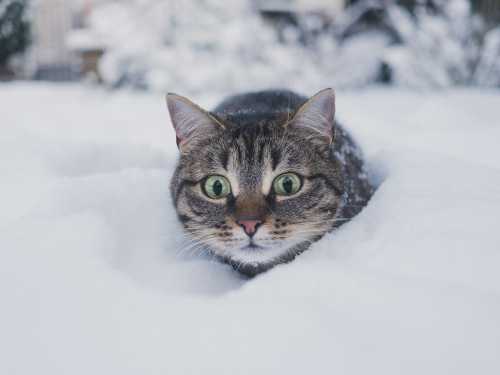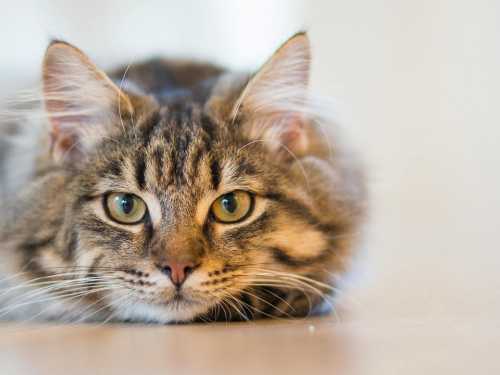
Domestic cats are true thermophiles, and this is not surprising, because their comfortable existence depends on warmth. Although their seemingly fluffy coat may mislead some, in fact, these animals really do not like the cold.
So let's figure out why this happens and what dangers low temperatures pose for our pets.
Hairless cat
It can get really cold outside in the winter in 15 minutes. And 40 minutes is usually the critical limit for a Sphynx or Peterbald that decides to take a walk in the cold.
😿😿 I once saw two of these at a vet clinic. Both cats were found 40 minutes after going outside in 20-degree frost. Unfortunately, the doctors could do nothing.
Fluffy cats
They are also very thermophilic creatures. Even at temperatures slightly below +18, at home, some cats, especially short-haired ones, can curl up into a ball and cover their noses so as not to lose precious heat.
In general, the rule of thumb for cats is: it's better to be a little hotter than necessary than a little colder than they're comfortable with. Cats don't like the cold and have a hard time dealing with it.
Features of feline thermoreception
The temperature of a cat's body is higher than that of a human, it is approximately 38-39 degrees. The coat only partially protects the cat from the cold, because not all cat breeds have thick fur and a dense undercoat. For many short-haired breeds, such a coat is suitable only for summer and off-season, but not for winter.
If it is also damp outside, the cat starts to freeze more. A hungry cat freezes more, especially in the cold season, so only those street cats that are well-fed and allowed to warm up in warm basements survive.
Maximum cat cold tolerance
When you see frost-resistant cats on TV, everyone pays attention to their wonderful fur, but not everyone remembers their unprotected paws. A cat's paws freeze quickly. Even a cat sitting at home on a cold windowsill risks hypothermia, which can reduce its immunity and make it more vulnerable to viral diseases.
If the paws are frozen, the whole cat starts to freeze. Even at a temperature of +5°C, some cats, especially domestic and unacclimatized ones, may feel discomfort in their paws, trying to cover them with their tail, pull them to their belly, or find a warmer place.
A more or less acceptable temperature for short outdoor cat walks in winter is up to -5 degrees (depending on health and breed). Usually, at lower temperatures, they don't want to go outside at all. Well, except in overalls and in the arms of their beloved owner.
How many degrees of frost can extremely fluffy, long-haired, fluffiest cats withstand?
For frequent outdoor stays outside, a healthy cat needs the temperature to not fall below +5 degrees, and preferably above +18. The most comfortable range is from +18 to +26 degrees Celsius. Below 18 is already cool, above 26 is hot. And the ideal is +22.





